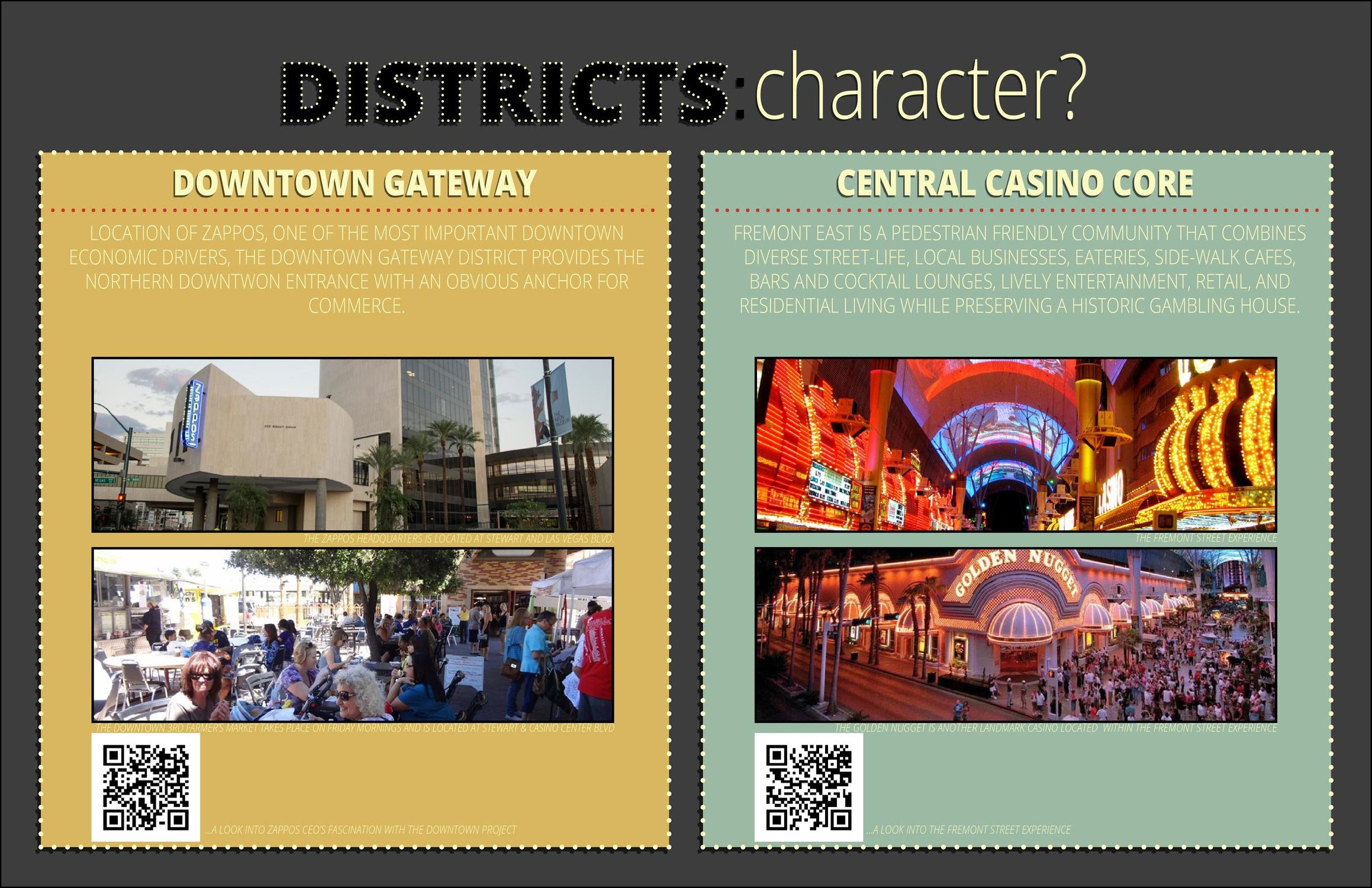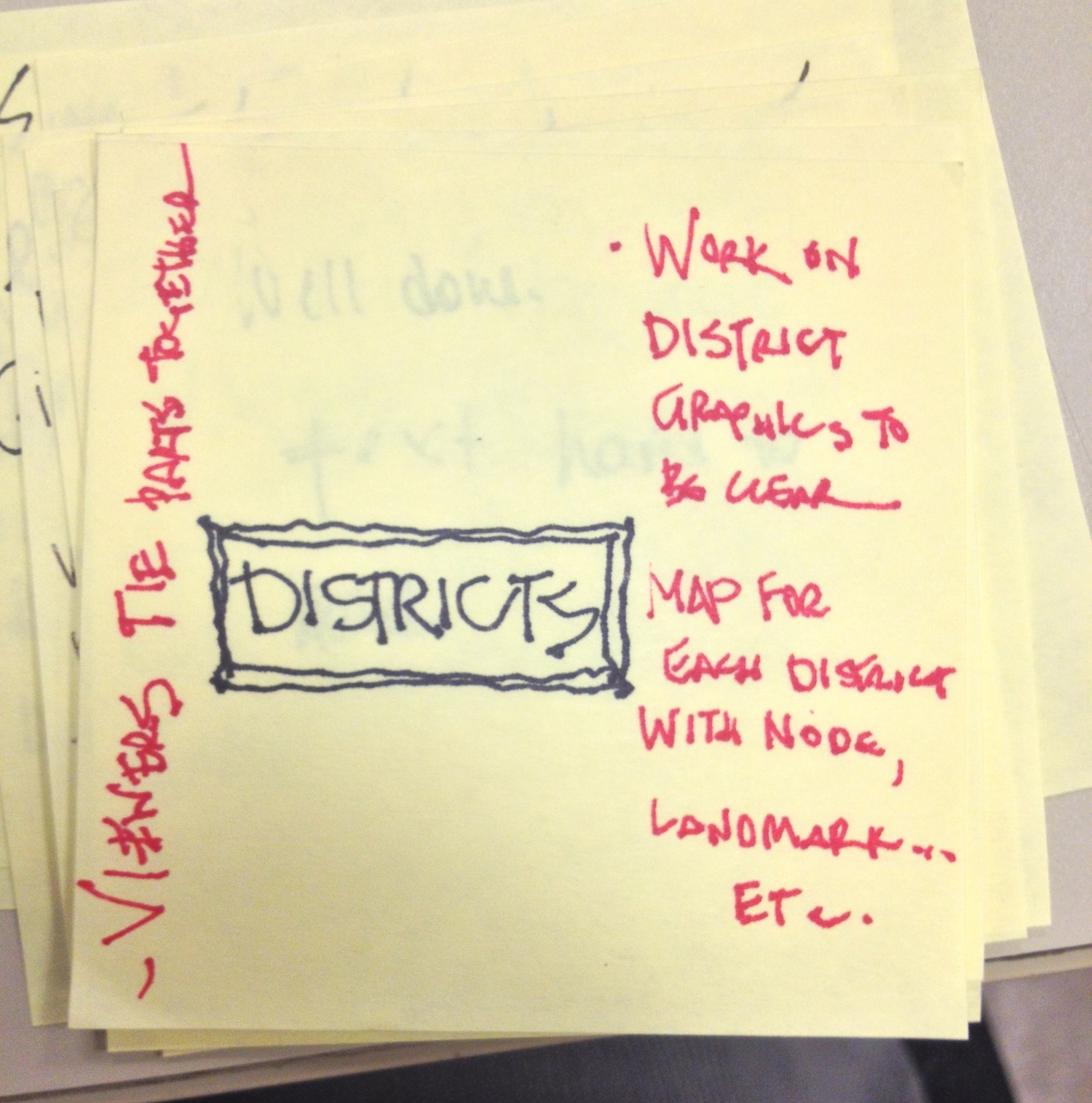Having made our first passes through the research on Downtown Las Vegas, with what might not be recognized as a fine-toothed comb, it appears that we are sitting pretty moving forward. On one hand we now have information ranging from the history, form-based code, weather/climate, and demographics. We are more knowledgeable today than we were yesterday. That is undoubtedly good. On the other hand, the gap that needs to bridged between now and the design phase is still very wide. That is to be expected.
But, with such an engaged and invested class, we were able to give each other much needed input in order to move forward. Below are my boards of research (rough, and with plenty of work left to be done) and some of the comments made about what I can do to take it a step forward:









As I highlighted in my previous post, my focus was on districts. I used the background information that I learned from Kevin Lynch's Image of the City and provided some definitions about districts. From there, while locating them on a referral map, I highlighted some of the big points and takeaways from each district (ten in all), and also provided the user with a QR code that would take them through a walkthrough or additional information about a feature of the district. Overall, great start. If nothing else, this research has allowed me to prepare myself mentally for all of the nightlife of Las Vegas. In a way I have been preparing for this trip for a long time.
All of the years of design induced insomnia have prepared me for Las Vegas.
As far as feedback goes, here are some of the more directional comments that I received last Monday.



What did I learn?
I learned that Las Vegas has a little of disconnect between the districts. This is partly because of the character strength within certain districts, but it is mostly due to the lack of continuity and identity as an entire downtown. For our 2nd site (the one highlighted on the map above) because it spans three different districts, and because the districts are either so vastly distinct, or lack any identity at all, it is going to prove immensely difficult to conceive a design with such continuity.
I also learned that there are numerous factors that must be weighed when working within a city of this type. Between the obvious climate/environmental limitations, to the fresh topic of Form-Based Code, we will not be afforded any obvious privileges to a designing "sand box." But, with these limitations come a much richer opportunity. A framed question, instead of an open ended one. There are obvious answers, but there are great opportunities to rethink the frame, and what our limitations might entail.
How did the feedback go?
Well, mostly good. Lots of encouraging words. But, it would appear that I need to rethink how I display text as far as readability is concerned. Other than that, as some of the notes above show, it would be smart to begin making connections between districts and demographics, connections between each district, as well as providing a map of each individual district within the presentation. These are fantastic critiques, and ones that I intend to move forward with.
Why is this important to us in this project?
Well, I always "knew" districts were important, but now I know districts are important. There is a little bit of an identity crisis going on in Las Vegas as the idea of gambling as an industry becomes less certain. Districts can provide diversity, depth, and stability within a city, and provide an eclectic mix of people the opportunity to enjoy it.
Notes
- Last night I decided to do some "research" and popped on the cult classic Fear and Loathing in Las Vegas. It was always a movie that I had intended on watching, and while not perfectly accurate in describing Las Vegas by any means (especially given that it is set in 1971), the movie left me with a little bit anxious. I am unsure as to whether it was anxiously excited, or anxiously nervous. Nonetheless, it got me thinking. I'd recommend it. Maybe only once. Not sure I get could through that wild ride again. Even a Toby McGuire with silken white hair could not convince me otherwise.
- Despite almost entirely being framed around The Strip, there was a short glimpse of Fremont East in an early scene. Chalk one up for Downtown.
- One and a half weeks until Las Vegas.
I might need to purchase a bucket hat prior to Las Vegas.



